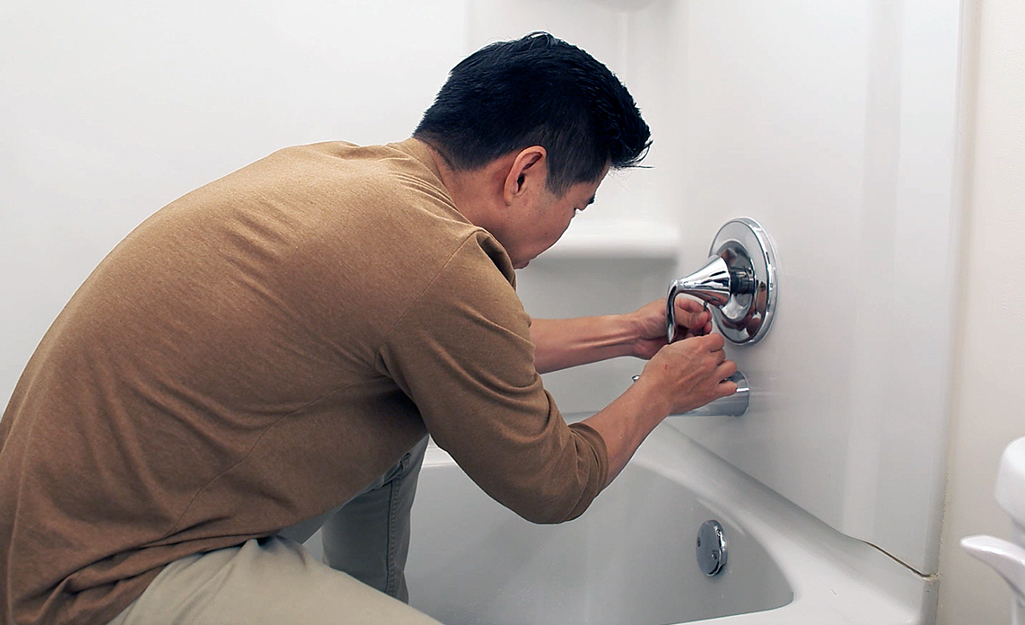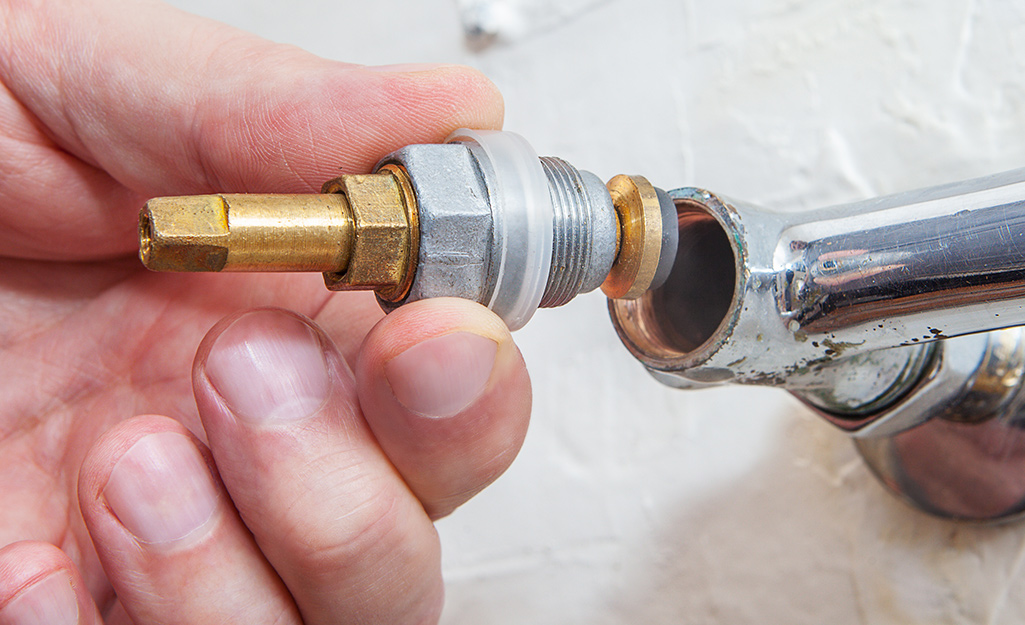What It's Mandatory to Repair a Faulty Faucet
What It's Mandatory to Repair a Faulty Faucet
Blog Article
Are you currently on the lookout for guidance on Why Are My Faucets Dripping (And Can I Fix It Myself)??

Dripping faucets might feel like a minor hassle, however their influence goes beyond simply the nuisance of the audio. From wasting water to incurring unnecessary economic costs and wellness dangers, neglecting a dripping tap can result in numerous effects. In this post, we'll delve into why it's crucial to resolve this usual home problem promptly and successfully.
Wastefulness of Water
Environmental Effect
Trickling faucets contribute significantly to water waste. According to the Environmental Protection Agency (EPA), a solitary faucet trickling at one drip per secondly can waste more than 3,000 gallons of water annually. This not only pressures water resources however likewise influences environments and wild animals based on them.
Step-by-Step Guide to Fixing a Dripping Tap
Devices Called for
Prior to attempting to fix a dripping tap, collect the essential devices, including an adjustable wrench, screwdrivers, substitute components (such as washers or cartridges), and plumber's tape.
Usual Tap Issues and Their Solutions
Recognize the kind of faucet and the details issue creating the drip. Common issues include damaged washers, rusty valve seats, or defective O-rings. Refer to manufacturer instructions or on the internet tutorials for step-by-step advice on repair services.
Financial Expenses
Enhanced Water Expenses
Past the ecological influence, trickling taps can inflate water costs substantially. The gathered wastage with time converts right into higher utility expenditures, which can have been stayed clear of with timely fixings.
Potential Residential Or Commercial Property Damage
Furthermore, extended dripping can lead to damage to components and surface areas bordering the faucet. Water accumulation can trigger staining, corrosion, and even architectural problems if left unattended, leading to extra repair expenses.
Wellness Issues
Mold and Mildew Growth
The constant presence of moisture from a leaking faucet creates an optimal setting for mold and mildew development. These fungis not only compromise interior air high quality but also present wellness threats, specifically for people with respiratory problems or allergic reactions.
Waterborne Conditions
Stationary water in trickling faucets can end up being a breeding place for germs and other pathogens, raising the danger of waterborne conditions. Contaminants such as Legionella germs prosper in stagnant water, possibly leading to serious illnesses when ingested or inhaled.
Do it yourself vs. Specialist Fixing
Pros and Cons of DIY Fixing
While some might attempt to take care of a dripping tap themselves, DIY fixings come with their own set of challenges. Without appropriate expertise and devices, do it yourself attempts can aggravate the problem or cause insufficient repair services, prolonging the trouble.
Advantages of Working With a Professional Plumber
Employing an expert plumber makes certain that the underlying cause of the leaking faucet is addressed properly. Plumbings possess the expertise and equipment to diagnose and fix faucet issues successfully, conserving time and reducing the threat of further damage.
Environmental Responsibility
Individual Contribution to Preservation
Taking responsibility for repairing dripping faucets straightens with wider initiatives towards water conservation and ecological sustainability. Every person's actions collectively make a substantial impact on preserving priceless sources.
Sustainable Living Practices
By prioritizing prompt repair services and adopting water-saving behaviors, people contribute to lasting living methods that profit both present and future generations.
Safety nets
Routine Maintenance Tips
To avoid leaking faucets, do routine upkeep such as cleansing aerators, evaluating for leakages, and replacing worn-out parts immediately. In addition, take into consideration setting up water-saving gadgets or updating to extra effective components.
Importance of Prompt Repairs
Dealing with trickling faucets as quickly as they're observed protects against further water wastefulness and possible damages, ultimately conserving both water and cash in the long run.
Influence On Building Worth
Assumption of Well-Maintained Residential Property
Preserving a residential property in good condition, consisting of dealing with upkeep concerns like trickling taps, enhances its viewed value and charm among potential buyers or tenants.
Impact on Resale Value
Residences with properly maintained plumbing components, consisting of taps, command greater resale worths in the real estate market. Dealing with dripping taps can add to a favorable impression throughout residential or commercial property inspections and arrangements.
Conclusion
Dealing with a trickling faucet exceeds plain comfort; it's a crucial step towards saving water, minimizing economic prices, and guarding health and wellness and building. Whether via do it yourself repair services or professional assistance, taking action to take care of trickling taps is a tiny yet impactful means to advertise responsible stewardship of sources and contribute to a healthier, much more sustainable future.
Why Are My Faucets Dripping (And Can I Fix it Myself)?
Causes of a Dripping or Leaking Faucet
Whether you’re hearing drops of water falling and hitting a sink, or noticing water ooze out from the base of the spout, you shouldn’t ignore a dripping or leaking faucet. And, the good news is, sometimes you can fix the problem yourself.
In this article, we’ll review a few common causes of dripping and leaky. We’ll also walk you through some basic ways to find the problem and handle it without calling anyone — and let you know when to call in a pro.
But, no matter what the cause, or whether you can handle it on your own, the sooner you address it, the better.
Each drip may be a tiny amount of water. But, they all add up quickly. According to the U.S. Geological Survey, one faucet losing one drop every 20 seconds — five a minute — wastes around a liter of water every day, and 173 gallons a year.
Add in more than one in your house, and it’s a lot of water to waste. So, we’ll help you get to the bottom of things quickly.
Four Reasons Your Faucet May Be Dripping
Aerator is Damaged or Unseated Valve Seat is Corroded O Ring is Loose or Worn Out Part of the Assembly is Loose Aerator is Damaged or Unseated
If you unscrew the end of your faucet, you’ll find the aerator. It’s the little stem piece with a screen on it that shuts off the water circulation.
If it’s damaged, or if it’s not sitting right, it will allow water to pass through.
Valve Seat is Corroded
Next is the valve seat, which is connected to the washer. If the washer wasn’t in place correctly, then it could have ground against the seat. Over time, this damages the valve seat.
The problem could also be corrosion: Over time, the part has worn out, and it’s now allowing water to pass through.
O Ring is Loose or Worn Out
Since the o ring is only a small rubber gasket, it’s a common reason why the faucet is dripping. You’ll find it at the base of the faucet, and it’s there to keep water from coming out where it’s not supposed to.
However, it’s common for the o ring to wear out over time. When it does, you’ll notice a drip.
Part of the Assembly is Loose
So far, we’ve looked at a few small, specific parts. But, the problem could be anywhere in the assembly if something’s out of place.
Even if a part isn’t damaged, over time, it may have become loose or dislodged. It could be the parts we mentioned, or the aerator at the tip of the faucet, the stem itself,
Can I Fix a Leaky Faucet Myself?
Depending on the problem, and how handy you are, there’s a chance you can fix a leaky faucet without calling a professional. But, you do run the risk of making the problem worse.
If it’s a small drip, you can certainly try a few troubleshooting tactics. We’ll walk you through them in a moment.
But, no matter what, your first step should be shutting off the water coming into the faucet. You should find a shutoff valve under the sink on the pipes leading to it. Turn each one clockwise until they close tightly.
Next, make sure you have the right tools for whatever you’re attempting. It’s tempting to make do with what you have. But, you need the right ones for a reason: You’re often dealing with small parts that can break if you handle them carelessly.
If you’re feeling confident, here are some places to start.
Items Near the Tip of the Faucet
A few of the parts we mentioned — particularly the valve seat and washer — are located at the tip of the faucet where the water comes out. They’re easy to access, making it a good place to start.
Check the O Ring
To check the o ring, you’ll need to take off the spout at the base. It’s easiest on kitchen sinks with long spouts, versus the smaller, bulkier base on most bathroom sinks.
Either way, this can be tricky, so do it carefully and don’t force anything. If it’s not coming right off, you’re much better off calling in a pro than possibly breaking something.
For a kitchen sink, there’s usually a nut or coupling assembly at the base of the spout. These often slide off easily without using any tools.
Once you’ve disassembled those parts, gently but forcefully twist off the spout.
Then, you can see the o rings. There should be two of the rubber gaskets on the base. If they look worn or damaged, replace them, and see if that solves the problem.

As an avid person who reads about Leaky Faucets: Why They Happen & What to Do About Them, I was thinking sharing that piece of content was a great idea. Enjoyed our post? Please share it. Help another person check it out. I truly appreciate reading our article about What Causes Leaky Faucets & How To Fix Them.
Report this page